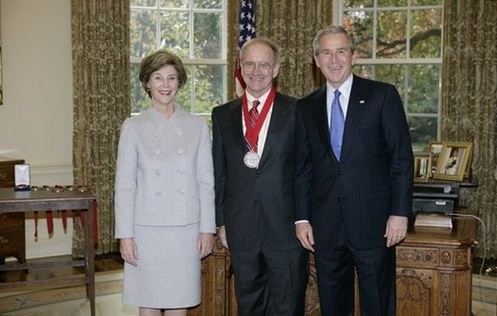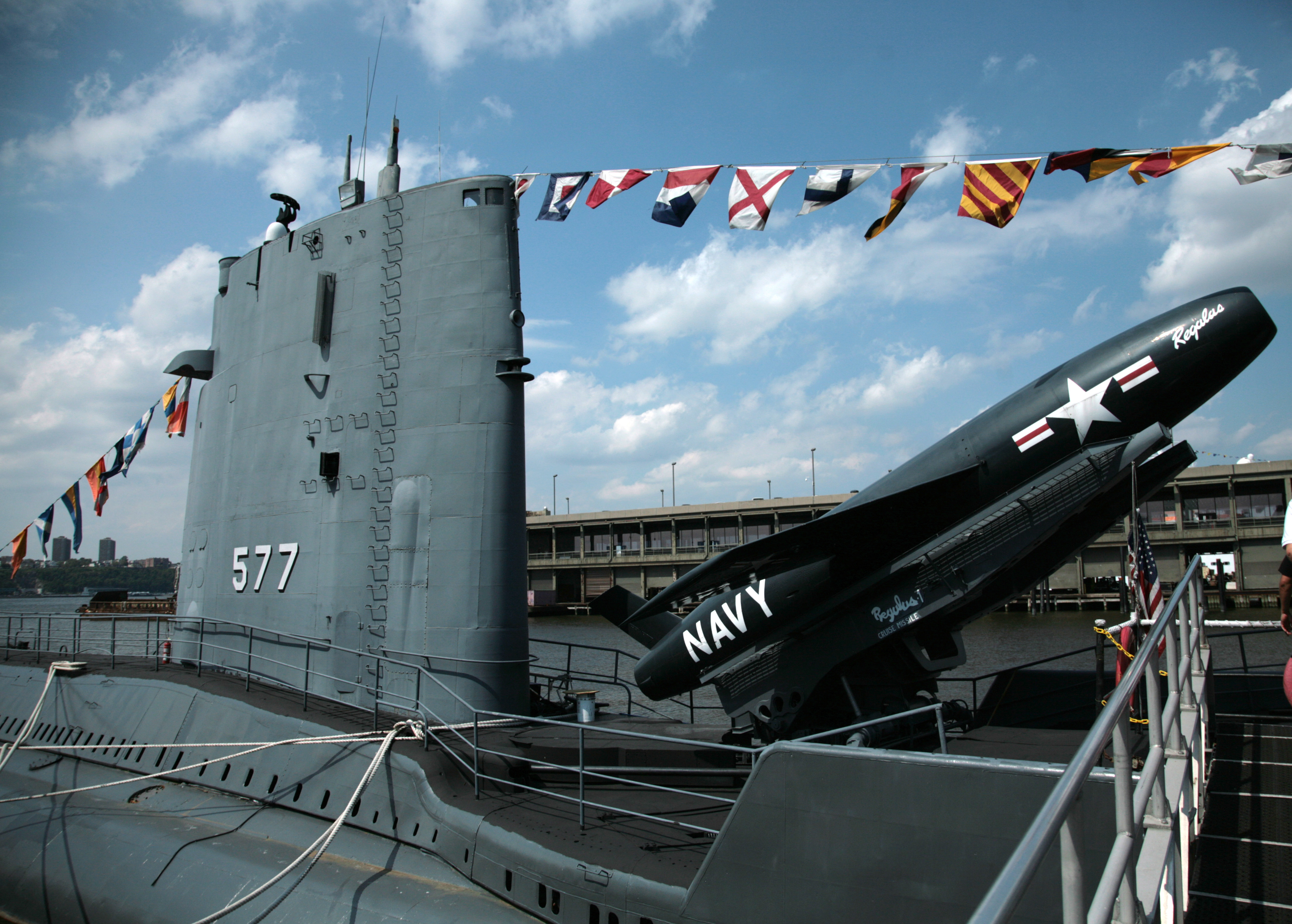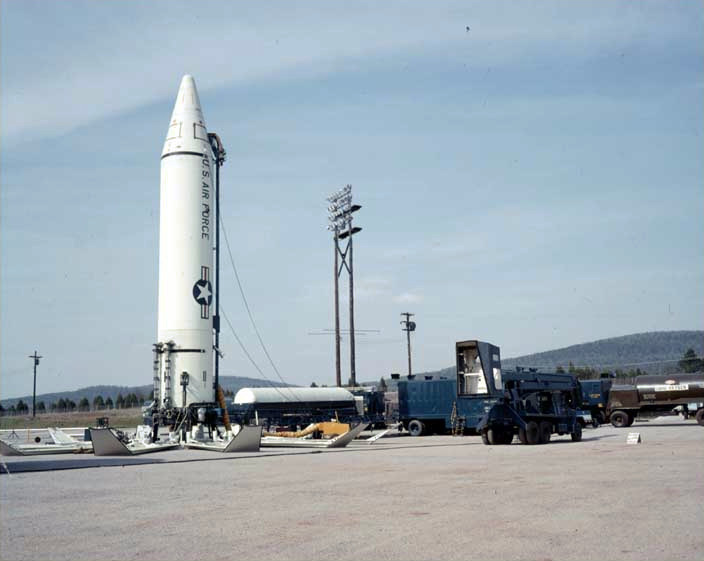|
Pax Atomica
Pax Atomica is one of the terms that has sometimes been used to describe the period of severe tensions without a major military conflict between the United States of America and the Soviet Union during the Cold War. The term is also at times used to describe the entire post World War II/ post-atomic-bomb era.Chicken Pax Atomica: The Cold War Stability of Nuclear Deterrence. By James Pasley. Journal of International and Area Studies. Vol. 15, No. 2, December 2008. Pg. 21. In the phrase's narrower application, applying only to the Cold War era, the phrase refers to the argument that the stability between the two superpowers was caused by each side's large nuclear arsenals which led to a state of Mutually Assured Destruction (MAD).Selassie, Bereket H. ''Eritrea and the United States''. The Red Sea Press, 1989, p. 2. That is, if one of the superpowers would have launched a nuclear attack, the other would have responded in the same way. This threatened the complete destruction of b ... [...More Info...] [...Related Items...] OR: [Wikipedia] [Google] [Baidu] |
United States Of America
The United States of America (U.S.A. or USA), commonly known as the United States (U.S. or US) or America, is a country primarily located in North America. It consists of 50 states, a federal district, five major unincorporated territories, nine Minor Outlying Islands, and 326 Indian reservations. The United States is also in free association with three Pacific Island sovereign states: the Federated States of Micronesia, the Marshall Islands, and the Republic of Palau. It is the world's third-largest country by both land and total area. It shares land borders with Canada to its north and with Mexico to its south and has maritime borders with the Bahamas, Cuba, Russia, and other nations. With a population of over 333 million, it is the most populous country in the Americas and the third most populous in the world. The national capital of the United States is Washington, D.C. and its most populous city and principal financial center is New York City. Paleo ... [...More Info...] [...Related Items...] OR: [Wikipedia] [Google] [Baidu] |
Soviet Union
The Soviet Union,. officially the Union of Soviet Socialist Republics. (USSR),. was a transcontinental country that spanned much of Eurasia from 1922 to 1991. A flagship communist state, it was nominally a federal union of fifteen national republics; in practice, both its government and its economy were highly centralized until its final years. It was a one-party state governed by the Communist Party of the Soviet Union, with the city of Moscow serving as its capital as well as that of its largest and most populous republic: the Russian SFSR. Other major cities included Leningrad (Russian SFSR), Kiev (Ukrainian SSR), Minsk ( Byelorussian SSR), Tashkent (Uzbek SSR), Alma-Ata (Kazakh SSR), and Novosibirsk (Russian SFSR). It was the largest country in the world, covering over and spanning eleven time zones. The country's roots lay in the October Revolution of 1917, when the Bolsheviks, under the leadership of Vladimir Lenin, overthrew the Russian Provisional Government ... [...More Info...] [...Related Items...] OR: [Wikipedia] [Google] [Baidu] |
Cold War
The Cold War is a term commonly used to refer to a period of geopolitical tension between the United States and the Soviet Union and their respective allies, the Western Bloc and the Eastern Bloc. The term '' cold war'' is used because there was no large-scale fighting directly between the two superpowers, but they each supported major regional conflicts known as proxy wars. The conflict was based around the ideological and geopolitical struggle for global influence by these two superpowers, following their temporary alliance and victory against Nazi Germany and Imperial Japan in 1945. Aside from the nuclear arsenal development and conventional military deployment, the struggle for dominance was expressed via indirect means such as psychological warfare, propaganda campaigns, espionage, far-reaching embargoes, rivalry at sports events, and technological competitions such as the Space Race. The Western Bloc was led by the United States as well as a number of other First W ... [...More Info...] [...Related Items...] OR: [Wikipedia] [Google] [Baidu] |
World War II
World War II or the Second World War, often abbreviated as WWII or WW2, was a world war that lasted from 1939 to 1945. It involved the vast majority of the world's countries—including all of the great powers—forming two opposing military alliances: the Allies and the Axis powers. World War II was a total war that directly involved more than 100 million personnel from more than 30 countries. The major participants in the war threw their entire economic, industrial, and scientific capabilities behind the war effort, blurring the distinction between civilian and military resources. Aircraft played a major role in the conflict, enabling the strategic bombing of population centres and deploying the only two nuclear weapons ever used in war. World War II was by far the deadliest conflict in human history; it resulted in 70 to 85 million fatalities, mostly among civilians. Tens of millions died due to genocides (including the Holocaust), starvation, ma ... [...More Info...] [...Related Items...] OR: [Wikipedia] [Google] [Baidu] |
Nuclear Weapons
A nuclear weapon is an explosive device that derives its destructive force from nuclear reactions, either fission (fission bomb) or a combination of fission and fusion reactions (thermonuclear bomb), producing a nuclear explosion. Both bomb types release large quantities of energy from relatively small amounts of matter. The first test of a fission ("atomic") bomb released an amount of energy approximately equal to . The first thermonuclear ("hydrogen") bomb test released energy approximately equal to . Nuclear bombs have had yields between 10 tons TNT (the W54) and 50 megatons for the Tsar Bomba (see TNT equivalent). A thermonuclear weapon weighing as little as can release energy equal to more than . A nuclear device no larger than a conventional bomb can devastate an entire city by blast, fire, and radiation. Since they are weapons of mass destruction, the proliferation of nuclear weapons is a focus of international relations policy. Nuclear weapons have been deployed t ... [...More Info...] [...Related Items...] OR: [Wikipedia] [Google] [Baidu] |
Mutually Assured Destruction
Mutual assured destruction (MAD) is a doctrine of military strategy and national security policy which posits that a full-scale use of nuclear weapons by an attacker on a nuclear-armed defender with second-strike capabilities would cause the complete annihilation of both the attacker and the defender. It is based on the theory of rational deterrence, which holds that the threat of using strong weapons against the enemy prevents the enemy's use of those same weapons. The strategy is a form of Nash equilibrium in which, once armed, neither side has any incentive to initiate a conflict or to disarm. The term "mutual assured destruction", commonly abbreviated "MAD", was coined by Donald Brennan, a strategist working in Herman Kahn's Hudson Institute in 1962. However, Brennan came up with this acronym ironically, spelling out the English word " mad" to argue that holding weapons capable of destroying society was irrational. Theory Under MAD, each side has enough nuclear weaponr ... [...More Info...] [...Related Items...] OR: [Wikipedia] [Google] [Baidu] |
John Lewis Gaddis
John Lewis Gaddis (born 1941) is an American international relations scholar, military historian, and writer. He is the Robert A. Lovett Professor of Military and Naval History at Yale University. He is best known for his work on the Cold War and grand strategy, and he has been hailed as the "Dean of Cold War Historians" by ''The New York Times''. Gaddis is also the official biographer of the seminal 20th-century American statesman George F. Kennan. '' George F. Kennan: An American Life'' (2011), his biography of Kennan, won the 2012 Pulitzer Prize for Biography or Autobiography. Biography Gaddis was born in Cotulla, Texas, in 1941. He attended the University of Texas at Austin, receiving his BA in 1963, MA in 1965, and PhD in 1968, the latter under the direction of Robert Divine. Gaddis then taught briefly at Indiana University Southeast, before joining The Ohio University in 1969. At Ohio, he founded and directed the Contemporary History Institute, and was named a distingu ... [...More Info...] [...Related Items...] OR: [Wikipedia] [Google] [Baidu] |
Long Peace
"Long Peace", also described as the Pax Americana, is a term for the unprecedented historical period following the end of World War II in 1945 to the present day. The period of the Cold War (1945–1991) was marked by the absence of major wars between the great powers of the period, the United States and the Soviet Union. First recognized in 1986, the period of "relative peace" has been compared to the relatively-long stability of the Roman Empire, the Pax Romana, or the Pax Britannica, a century of relative peace that existed between the end of the Napoleonic Wars in 1815 and the outbreak of World War I in 1914, during which the British Empire held global hegemony. In the 1990s, it was thought that the Long Peace was a unique result of the Cold War. However, when the Cold War ended the same trends continued in what has also been called the "New Peace". The period has exhibited more than a quarter of a century of even greater stability and peacefulness and has also shown continued ... [...More Info...] [...Related Items...] OR: [Wikipedia] [Google] [Baidu] |
Pax Romana
The Pax Romana (Latin for 'Roman peace') is a roughly 200-year-long timespan of Roman history which is periodization, identified as a period and as a golden age (metaphor), golden age of increased as well as sustained Imperial cult of ancient Rome, Roman imperialism, relative peace and order, prosperous stability, Regional hegemony, hegemonial power, and Roman expansion, regional expansion, despite several List of Roman civil wars and revolts, revolts and List of Roman wars and battles, wars, and Roman–Persian Wars, continuing competition with Parthia. It is traditionally dated as commencing from the accession of Augustus, founder of the Roman principate, in 27 BC and concluding in 180 AD with the death of Marcus Aurelius, the last of the "Five Good Emperors". Since it was inaugurated by Augustus at the end of the War of Actium, final war of the Roman Republic, it is sometimes also called the Pax Augusta. During this period of about two centuries, the Roman Empire achieved its gre ... [...More Info...] [...Related Items...] OR: [Wikipedia] [Google] [Baidu] |
Roman Age
In modern historiography, ancient Rome refers to Roman civilisation from the founding of the city of Rome in the 8th century BC to the collapse of the Western Roman Empire in the 5th century AD. It encompasses the Roman Kingdom (753–509 BC), Roman Republic (509–27 BC) and Roman Empire (27 BC–476 AD) until the fall of the western empire. Ancient Rome began as an Italic settlement, traditionally dated to 753 BC, beside the River Tiber in the Italian Peninsula. The settlement grew into the city and polity of Rome, and came to control its neighbours through a combination of treaties and military strength. It eventually dominated the Italian Peninsula, assimilated the Greek culture of southern Italy ( Magna Grecia) and the Etruscan culture and acquired an Empire that took in much of Europe and the lands and peoples surrounding the Mediterranean Sea. It was among the largest empires in the ancient world, with an estimated 50 to 90 million inhabitants, roughly 20% of ... [...More Info...] [...Related Items...] OR: [Wikipedia] [Google] [Baidu] |
Deterrence Theory
Deterrence theory refers to the scholarship and practice of how threats or limited force by one party can convince another party to refrain from initiating some other course of action. The topic gained increased prominence as a military strategy during the Cold War with regard to the use of nuclear weapons and is related to but distinct from the concept of mutual assured destruction, which models the preventative nature of full-scale nuclear attack that would devastate both parties in a nuclear war. The central problem of deterrence revolves around how to credibly threaten military action or nuclear punishment on the adversary despite its costs to the deterrer. Deterrence is widely defined as any use of threats (implicit or explicit) or limited force intended to dissuade an actor from taking an action (i.e. maintain the status quo). Deterrence is unlike compellence, which is the attempt to get an actor (such as a state) to take an action (i.e. alter the status quo). Both are ... [...More Info...] [...Related Items...] OR: [Wikipedia] [Google] [Baidu] |
Nuclear Arms Race
The nuclear arms race was an arms race competition for supremacy in nuclear warfare between the United States, the Soviet Union, and their respective allies during the Cold War. During this same period, in addition to the American and Soviet nuclear stockpiles, other countries developed nuclear weapons, though none engaged in warhead production on nearly the same scale as the two superpowers. World War II The first nuclear weapon was created by the United States of America during the Second World War and was developed to be used against the Axis powers. Scientists of the Soviet Union were aware of the potential of nuclear weapons and had also been conducting research in the field. The Soviet Union was not informed officially of the Manhattan Project until Stalin was briefed at the Potsdam Conference on July 24, 1945, by U.S. President Harry S. Truman, eight days after the first successful test of a nuclear weapon. Despite their wartime military alliance, the United States and ... [...More Info...] [...Related Items...] OR: [Wikipedia] [Google] [Baidu] |
.png)







